Weather II: Understanding Atmospheric Processes
Weather refers to the atmospheric conditions that occur at a specific place and time. Understanding the processes that drive weather patterns is essential in Earth science. Below is a study guide to help you understand the key concepts related to weather II.
Atmospheric Pressure and Wind
Atmospheric pressure is the force exerted by the weight of the air above a certain point. It is measured using a barometer and is an important factor in determining weather patterns. High pressure areas are associated with clear skies and stable weather, while low pressure areas are linked to cloudy skies and precipitation. The movement of air from high pressure to low pressure areas creates wind. Wind direction is named based on the direction from which it originates, and the speed is measured using anemometers.
Study Questions:
- What is atmospheric pressure, and how is it measured?
- Explain the relationship between atmospheric pressure and weather patterns.
- How is wind direction determined, and what instruments are used to measure wind speed?
Moisture in the Atmosphere
Water vapor in the atmosphere plays a significant role in weather patterns. Evaporation, condensation, and precipitation are part of the water cycle. Relative humidity is a measure of the amount of moisture in the air compared to the maximum amount the air can hold at a specific temperature. Dew point is the temperature at which air becomes saturated and condensation occurs. Cloud formation and precipitation are influenced by these moisture-related factors.
Study Questions:
- Describe the processes involved in the water cycle.
- What is relative humidity, and how is it related to dew point?
- How does moisture in the atmosphere contribute to cloud formation and precipitation?
Weather Fronts and Air Masses
Weather fronts are boundaries between air masses with different properties. Cold fronts occur when a cold, dense air mass displaces a warm air mass, leading to abrupt weather changes. Warm fronts form when warm air replaces cold air, often bringing steady precipitation. Stationary fronts occur when the boundary between air masses does not move. Understanding the interactions between air masses at fronts is crucial for weather prediction.
Study Questions:
- What are the different types of weather fronts, and what weather conditions are associated with each?
- Explain the concept of air masses and their role in the formation of weather fronts.
- How do weather fronts contribute to the prediction of weather patterns?
Conclusion
Understanding atmospheric processes is essential for predicting and understanding weather patterns. By grasping the concepts of atmospheric pressure, moisture in the atmosphere, and weather fronts, you will be better equipped to interpret and predict weather conditions.
.◂Earth Science Worksheets and Study Guides High School. Weather II
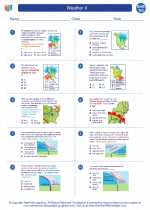
 Worksheet/Answer key
Worksheet/Answer key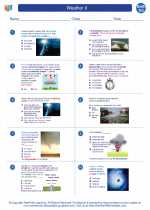
 Worksheet/Answer key
Worksheet/Answer key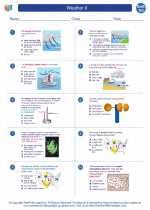
 Vocabulary/Answer key
Vocabulary/Answer key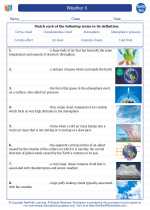
 Vocabulary/Answer key
Vocabulary/Answer key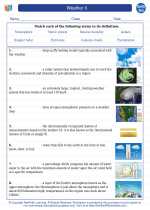
 Vocabulary/Answer key
Vocabulary/Answer key
